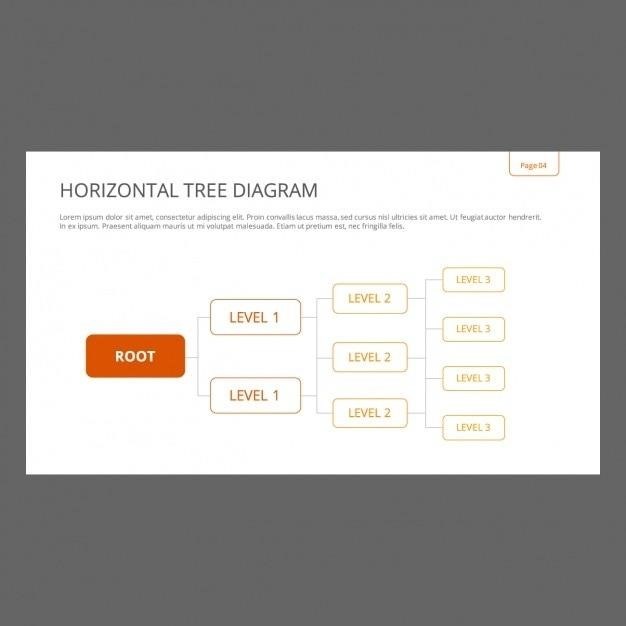One-Step Equations PDFs⁚ A Comprehensive Overview
This overview explores the world of one-step equation PDFs, encompassing various problem types, solution techniques, and resource availability. From integer-based to fractional equations, these PDFs offer diverse worksheets catering to different skill levels, enhancing comprehension and problem-solving abilities. They provide valuable practice and real-world applications.
Types of One-Step Equations Found in PDFs

One-step equation PDFs typically feature a range of equation types, each designed to build a strong foundation in fundamental algebraic concepts. These often include equations involving addition, subtraction, multiplication, and division. For instance, you might encounter problems like “x + 5 = 10,” requiring subtraction to isolate the variable, or “3y = 12,” necessitating division to solve for ‘y’. The complexity can increase with the introduction of negative numbers and fractions. Some PDFs might present equations such as “-7 + z = 2” or “a/4 = 6,” demanding careful attention to signs and the application of inverse operations. The variety ensures comprehensive practice across all basic arithmetic operations within the context of algebraic equations. The inclusion of both positive and negative integers, alongside fractional components, provides a complete spectrum of problem-solving scenarios, adequately preparing students for more complex algebraic concepts in the future. Many PDFs also incorporate word problems that require translating real-world scenarios into algebraic equations before solving, further enriching the learning experience and highlighting the practical application of these fundamental mathematical skills. This diverse range of problems makes one-step equation PDFs an invaluable tool for mastering these core concepts.
Solving One-Step Equations⁚ A Step-by-Step Guide
Solving one-step equations hinges on the principle of maintaining balance on both sides of the equals sign. The core strategy involves isolating the variable by performing the inverse operation. For addition equations (e.g., x + 5 = 10), subtract the constant from both sides (10 ⎼ 5 = 5, thus x = 5). Similarly, for subtraction equations (e.g., y ⎼ 3 = 7), add the constant to both sides (7 + 3 = 10, so y = 10). Multiplication equations (e.g., 4z = 20) require division of both sides by the coefficient (20 / 4 = 5, resulting in z = 5). Conversely, division equations (e.g., w/2 = 6) necessitate multiplication of both sides by the divisor (6 * 2 = 12, therefore w = 12). Remember to always perform the same operation on both sides to preserve the equation’s equality. Carefully check your solution by substituting the calculated value back into the original equation to ensure it holds true. This methodical approach ensures accuracy and reinforces the fundamental concept of balancing equations, a critical skill for tackling more complex algebraic problems. Many PDFs provide worked examples and ample practice exercises to solidify understanding and build confidence in solving one-step equations proficiently. This step-by-step guide emphasizes the importance of systematic problem-solving.
One-Step Equations Worksheets⁚ Difficulty Levels

One-step equation worksheets are widely available in various difficulty levels, catering to diverse learning needs and skill sets. Beginner worksheets typically focus on simple addition and subtraction equations using positive integers, providing a foundational understanding of balancing equations and isolating variables. Intermediate worksheets introduce multiplication and division, often incorporating larger numbers and a mix of operations to challenge students’ problem-solving skills. Advanced worksheets incorporate negative numbers, fractions, and decimals, demanding a deeper understanding of number operations and algebraic manipulation. Some worksheets are designed to integrate real-world scenarios, enhancing problem-solving relevance. The varied difficulty levels allow for progressive learning, starting with basic concepts and gradually increasing complexity, mirroring the natural progression of mathematical understanding. This tiered approach ensures that students can build a strong foundation before tackling more challenging problems, promoting confidence and mastery of one-step equations. The availability of diverse worksheets caters to individual learning paces and strengthens comprehension across different skill levels. Many online resources and textbooks offer such varied worksheets, facilitating effective learning and practice.
Integer-Based One-Step Equations in PDFs
Integer-based one-step equations form a crucial foundational element in algebra education; PDF worksheets dedicated to these equations typically present problems involving addition, subtraction, multiplication, and division of integers. These exercises are designed to build a strong understanding of working with positive and negative numbers within the context of algebraic equations. The simplicity of one-step equations allows students to focus on mastering the core concepts of isolating variables and applying inverse operations to solve for the unknown. Mastering these foundational skills is crucial for progressing to more complex algebraic problems. The use of integers provides valuable practice in handling both positive and negative values, crucial for later applications involving more advanced mathematical concepts. Many online resources and textbooks offer comprehensive collections of integer-based one-step equation PDFs, providing ample practice opportunities for students of all levels. The clear and concise nature of these PDFs makes them readily accessible and easily digestible, fostering self-directed learning and reinforcing classroom instruction. These resources often include answer keys to facilitate self-assessment and prompt immediate feedback, crucial for effective learning and skill development.
Fractional One-Step Equations in PDFs
Fractional one-step equations introduce a layer of complexity beyond integer-based problems, requiring students to handle fractions and decimals within the context of algebraic manipulation. PDF worksheets focusing on these equations typically present problems involving addition, subtraction, multiplication, and division of fractions and decimals. These exercises are crucial for developing a comprehensive understanding of fraction arithmetic and its application in solving algebraic problems. The process of solving fractional one-step equations involves applying inverse operations, often requiring the use of reciprocals in multiplication and division. This necessitates a strong understanding of fraction manipulation and simplification techniques. Mastering fractional one-step equations builds a strong foundation for tackling more complex algebraic problems involving fractions and rational expressions. Many online resources and textbooks provide collections of fractional one-step equation PDFs, offering diverse problem sets and levels of difficulty. These resources often include step-by-step solutions or worked examples to guide students through the problem-solving process and help them understand the underlying concepts. The availability of these PDFs allows for self-paced learning and practice, enhancing comprehension and building confidence in handling fractions within algebraic contexts. These exercises are essential for developing fluency in both arithmetic and algebraic skills.
Real-World Applications of One-Step Equations
One-step equations, despite their apparent simplicity, possess remarkable applicability in numerous real-world scenarios. Understanding their practical uses transforms them from abstract mathematical concepts into powerful tools for problem-solving in everyday life. Consider calculating the total cost of items after a discount⁚ a simple one-step equation can effortlessly determine the final price. Similarly, determining the number of items needed based on a given budget requires the application of one-step equations. Dividing a total cost among multiple individuals involves straightforward one-step equations. These scenarios, common in personal finance, highlight the immediate relevance of this foundational algebraic skill. In scientific contexts, one-step equations are invaluable. Determining the speed of an object given its distance and time, or calculating the time taken for a journey at a known speed and distance, frequently uses one-step equations. These equations are also fundamental in basic physics problems involving forces, motion, and energy. Even seemingly complex scenarios can be simplified to one-step equations; this is a crucial skill for modeling and problem-solving in various fields. Understanding how to represent real-world situations using algebraic equations empowers individuals to tackle problems effectively and efficiently. The ability to translate words into mathematical statements is a key component of mathematical literacy. Mastering one-step equations provides a crucial stepping stone towards more advanced mathematical concepts and real-world applications.
Resources for One-Step Equation PDFs
The internet offers a wealth of resources for acquiring high-quality PDFs focusing on one-step equations. Educational websites, specifically designed for mathematics instruction, often provide free downloadable worksheets. These websites frequently categorize worksheets by difficulty level, allowing for targeted practice based on individual needs and skill levels. Many offer answer keys, enabling self-assessment and independent learning. Reputable educational publishers also provide comprehensive resources, sometimes offering both free samples and paid access to extensive collections of one-step equation PDFs. These paid resources often include detailed explanations, additional practice problems, and varied question types. Online search engines can be utilized effectively to locate these resources; however, it’s crucial to assess the reliability and credibility of the source before downloading any materials. Looking for sites associated with educational institutions or established publishers can help ensure the accuracy and pedagogical soundness of the content. Furthermore, educational platforms and online learning communities frequently share and recommend valuable PDF resources. These platforms often provide a space for users to review and rate resources, which can be helpful in identifying high-quality materials. By leveraging these diverse online avenues, learners can find ample resources to support their understanding and mastery of one-step equations;